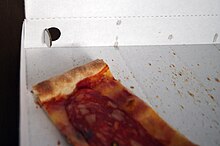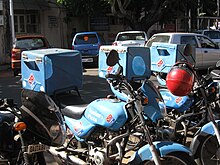
Corrugated fiberboard, corrugated cardboard, or corrugated is a type of packaging material consisting of a fluted corrugated sheet and one or two flat linerboards. It is made on "flute lamination machines" or "corrugators" and is used for making corrugated boxes. The corrugated medium sheet and the linerboard(s) are made of kraft containerboard, a paperboard material usually over 0.25 millimetres (0.01 in) thick.

Take-out or takeout is a prepared meal or other food items, purchased at a restaurant or fast food outlet with the intent to eat elsewhere. A concept found in many ancient cultures, take-out food is common worldwide, with a number of different cuisines and dishes on offer.

A box is a container with rigid sides used for the storage or transportation of its contents. Most boxes have flat, parallel, rectangular sides. Boxes can be very small or very large and can be used for a variety of purposes, from functional to decorative.

A carton is a box or container usually made of liquid packaging board, paperboard and sometimes of corrugated fiberboard. Many types of cartons are used in packaging. Sometimes a carton is also called a box.

Pizza delivery is a service in which a pizzeria or pizza chain delivers a pizza to a customer. An order is typically made either by telephone, or over the internet, in which the customer can request pizza type and size, and other items to be delivered with it, commonly including soft drinks. Pizzas may be delivered in cardboard pizza boxes or delivery bags, and deliveries are made with either an automobile, motorized scooter, or bicycle. Customers can, depending on the provider, choose to pay online, or in person, with cash, credit card, debit card or other means. A delivery fee is sometimes charged, although free delivery is also common.

A paper bag is a bag made of paper, usually kraft paper. Paper bags can be made either with virgin or recycled fibres to meet customers' demands. Paper bags are commonly used as shopping carrier bags and for packaging of some consumer goods. They carry a wide range of products from groceries, glass bottles, clothing, books, toiletries, electronics and various other goods and can also function as means of transport in day-to-day activities.

Cardboard boxes are industrially prefabricated boxes, primarily used for packaging goods and materials. Specialists in industry seldom use the term cardboard because it does not denote a specific material. The term cardboard may refer to a variety of heavy paper-like materials, including card stock, corrugated fiberboard, and paperboard. Cardboard boxes can be readily recycled.

A paper cup is a disposable cup made out of paper and often lined or coated with plastic or wax to prevent liquid from leaking out or soaking through the paper. It may be made of recycled paper.
Coated paper is paper that has been coated by a mixture of materials or a polymer to impart certain qualities to the paper, including weight, surface gloss, smoothness, or reduced ink absorbency. Various materials, including kaolinite, calcium carbonate, bentonite, and talc, can be used to coat paper for high-quality printing used in the packaging industry and in magazines.
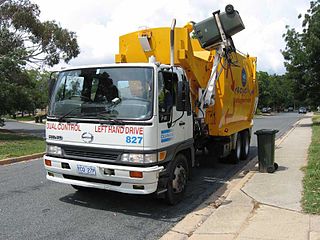
Kerbside collection or curbside collection is a service provided to households, typically in urban and suburban areas, of collecting and disposing of household waste and recyclables. It is usually accomplished by personnel using specially built vehicles to pick up household waste in containers that are acceptable to, or prescribed by, the municipality and are placed on the kerb.

An egg carton is a carton designed for carrying and transporting whole eggs.

Food packaging is a packaging system specifically designed for food and represents one of the most important aspects among the processes involved in the food industry, as it provides protection from chemical, biological and physical alterations. The main goal of food packaging is to provide a practical means of protecting and delivering food goods at a reasonable cost while meeting the needs and expectations of both consumers and industries. Additionally, current trends like sustainability, environmental impact reduction, and shelf-life extension have gradually become among the most important aspects in designing a packaging system.

A bulk box, also known as a bulk bin, skid box, pallet box, bin box, gaylord, or octabin, is a pallet-size box used for storage and shipping of bulk or packaged goods. Bulk boxes can be designed to hold many different types of items such as plastic pellets, watermelons, electronic components, and even liquids; some bulk boxes are stackable.

A pizza saver, sometimes referred to as pizza table or pizza stool, is an object used to prevent the top of a food container, such as a pizza box or cake box, from collapsing in at the center and touching the food inside.

Disposable food packaging comprises disposable products often found in fast-food restaurants, take-out restaurants and catering establishments. Typical products are foam food containers, plates, bowls, cups, utensils, doilies and tray papers. These products can be made from a number of materials including plastics, paper, bioresins, wood and bamboo.
Ecologic Brands Inc. is a United States company that specializes in creating eco-friendly packaging for consumer products. The products are made from sustainable materials and are designed to be recyclable or compostable. The company also provides branding and marketing services to help companies promote their environmentally conscious products.

Cardboard is a generic term for heavy paper-based products. The construction can range from a thick paper known as paperboard to corrugated fiberboard which is made of multiple plies of material. Natural cardboards can range from grey to light brown in color, depending on the specific product; dyes, pigments, printing, and coatings are available.
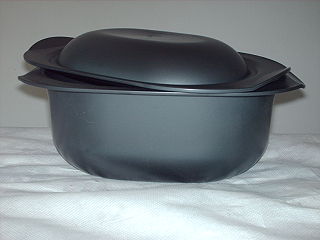
Plastic containers are containers made exclusively or partially of plastic. Plastic containers are ubiquitous either as single-use or reuseable/durable plastic cups, plastic bottles, plastic bags, foam food containers, Tupperware, plastic tubes, clamshells, cosmetic containers, up to intermediate bulk containers and various types of containers made of corrugated plastic. The entire packaging industry heavily depends on plastic containers or containers with some plastic content, besides paperboard and other materials. Food storage nowadays relies mainly on plastic food storage containers.

Packaging waste, the part of the waste that consists of packaging and packaging material, is a major part of the total global waste, and the major part of the packaging waste consists of single-use plastic food packaging, a hallmark of throwaway culture. Notable examples for which the need for regulation was recognized early, are "containers of liquids for human consumption", i.e. plastic bottles and the like. In Europe, the Germans top the list of packaging waste producers with more than 220 kilos of packaging per capita.
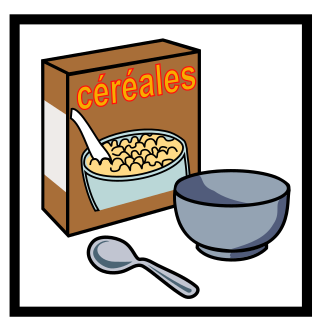
Overpackaging is the use of excess packaging. The Institute of Packaging Professionals defines overpackaging as “a condition where the methods and materials used to package an item exceed the requirements for adequate containment, protection, transport, and sale”



